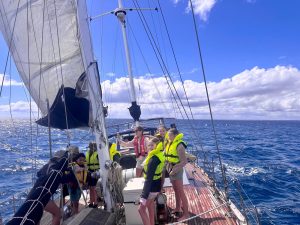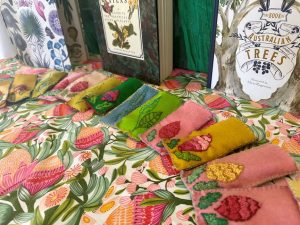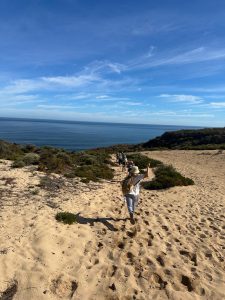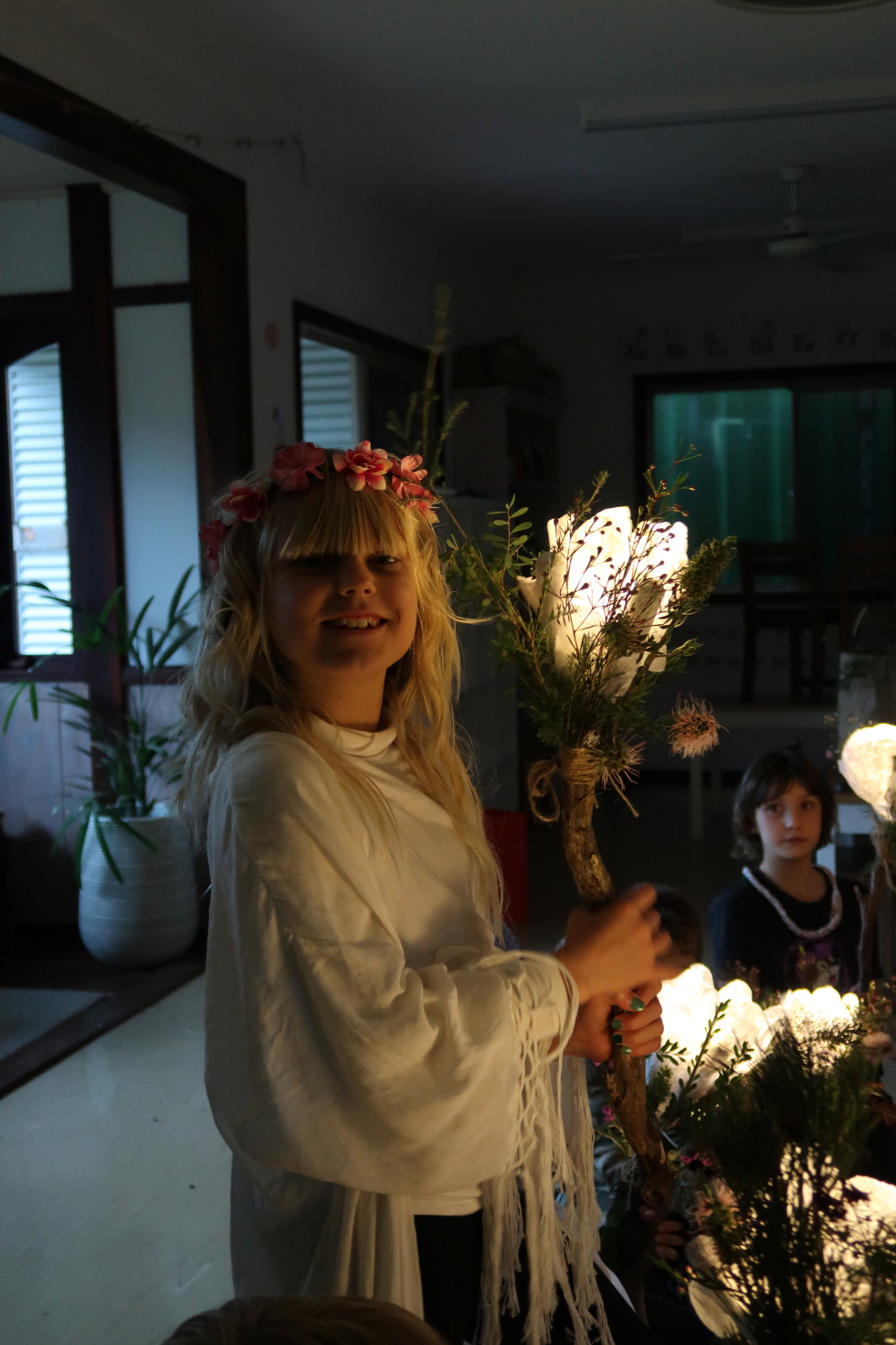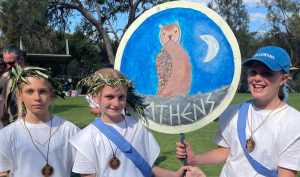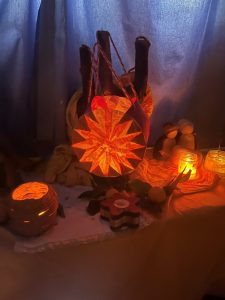Curriculum
The context of Australian children is, of course, vastly different to Europe of the 1920’s. This requires us to creatively adapt our methods in order to address the cultural and physical characteristics that make up the children’s world.
At Yallingup Steiner School we embrace the need to integrate our unique landscape and climate, Australian society and state and federal requirements when delivering learning experiences across the years.
The sequence of study has a progression based on numerous considerations and is enriched and deepened by each individual teacher.
Browse by section:

Kindergarten
The Kindergarten caters for 4, 5 and 6 year olds in an environment that allows children to learn through imitation and with activities that highlight the creative and skillful in truth and beauty. Creative play is the basis of the child’s “work” in the Kindergarten; it develops initiative, imagination and flexibility.
The Kindergarten teacher sees the kindy as a place where children can develop and grow in strength through a stable rhythm and routine before meeting the intellectual, technological and material challenges of later years.
Opportunities are created to experience the wonder and beauty of the changing seasons and to celebrate the festivals of the year. These celebrations bring the Kindergarten and the families together, thereby fostering and enriching the rhythm of the year in the child’s daily life.
In the Kindergarten the activities and approach support the development of the young child in readiness for more formal learning in the Primary school. We work to strengthen the natural development of the child through the use of language, song, storytelling, listening, fine and gross motor skills, through meaningful craft and artistic work, problem solving and through the joy of discovery.
Primary
Class One (Age 6/7)
The gradual change from activity and imitation in the kindergarten to more formal learning in Class 1 is facilitated by involving the feeling life – through stories, rhythm, pictures and song helping to connect new concepts to the child’s own experience. The child remains at one with the world and the class teacher helps form a cohesive group that respects each other and the inner authority of the teacher. The fairy tale world is the door that the children enter to discover moral realities, where good transforms evil.
Recorder playing is introduced during this year.
Class Two (Age 7/8)
Children have greatly extended their periods of concentration and memory allowing for more complex mathematical work and greater amounts of writing. They are capable of developing their own images and so rise from perception to concepts.
Study is based around Aesop’s fables, Celtic and Irish mythology, stories of saints and dreamtime stories with moral messages.
Class Three (Age 8/9)
There is great consideration of the change of consciousness over the next two years. An emerging sense of individuality is carefully nurtured. Creation stories and heroes of the Old Testament give a sense of the “group soul,” and creation myths and nature stories give a sense of time, origin and belonging. Study extends to address measurement, grammar and musical notation.
Observations of farming practice and building styles connects children to the active engagement of individuals to their communities.
Class Four (Age 9/10)
Children of this age are challenged with work and more work. They are encouraged to channel their individual gifts through a multitude of tasks. Individuality is encouraged in a new way and a new relationship to the class teacher may be fostered. Authority can now be supplemented with inner discipline responsibility and moral strength.
Norse myths, Icelandic and Finnish tales provide a picture of good spirited challenges to the Gods’ authority and see adventure and courage produce positive results.
Aboriginal tales lead children into the relationship between man and animal and local geography and history.
Class Five (Age 10/11)
This is a time between childhood and puberty and the children are provided with intellectual, moral and social challenges.
There is a move from myth to history and the focus is to find balance between the physical and the spiritual and between the practical and the ideal.
Children are met with picture images of Ancient civilisations; India, Mesopotamia, Egypt, Greece.
Major themes include;
Biographies
Grammar
Geometry
Zoology
Botany
Environmental Studies and Geography.
Class Six (Age 11/12)
Class six is a time of change and children are most inquisitive about the outside world. Teachers seize the opportunity to focus on the goodness and beauty in the world. Models of self-governing societies are explored and elements of ancient Roman culture are covered. Healthy criticism and debate encourages children to seek fairness and also highlights the need for compassion as well as courage.
Children are introduced to the study of:
Physics
Various religious outlooks
The Middle Ages
Astronomy
The mineral world encompassing 2nd and 3rd dimensional geometry.
Specialists Subjects
Drawing & Painting
In the class teacher period particularly then, the child is immersed in a world of visual and aural beauty. But it is also true that children of all ages learn better if their emotions are engaged through beauty, both experienced from without, and expressed from within.
All aspects of their work are accompanied by artistic work – painting and drawing in pure colours, modelling, and eurythmy. Intellectual work is brought through the medium of picture, developing imaginative thinking. Music is also integral to all activities in the classroom – music that is carefully chosen for its beauty and soul mood.
Wet on Wet Painting awakens children to the fluid world of colour movement. Their early efforts are primarily experiential in nature. However, guidance as to the how of painting is gently reinforced, so that the truest expressions of colour can be had: that is pure colour and not muddied colour, neither too diluted nor strong, neither too wet nor dry, images too diffuse nor overly hard-edged. Striving towards this interweaving balance of colour is in itself an artistic practice, the result of which enriches the child and develops his/her ability to appreciate colour harmony.
Eurythmy
Eurythmy is a new art form developed by Rudolf Steiner and his students to give expression to the subtle workings of the cosmos in the human being. Through the medium of artistic movement and gestural response to the living word (speech eurythmy) and sound (tone eurythmy) the human being finds resonance and harmony with its spiritual origin and purpose.
Eurythmy takes three directions: artistic, pedagogical and therapeutic. Eurythmy is taught in nearly all Steiner Schools throughout Australia and the world.
We have had a trained Eurythmist visit our school twice a year, these lessons ran in three week blocks. As well as working with each class intensively during her three weeks she took staff classes each morning and ran a parent class once a week during her visits.
Games
Games, folk dance and skipping are used both in the morning circle warm up for the day and as part of regular physical education lessons. In primary school, particular games are chosen depending on the consciousness and age of the group. They are presented in imaginary pictures to help children play a game rather than “do sport.”
Bothmer gymnastics is introduced from class 3 onwards, including roundelays, jumping rhythms, wooden stave rhythms, gymnastics and games. Class five develop skills ready for the Greek Olympics event held with all other Western Australian Steiner Schools annually. These skills include running, discus, javelin, standing long jump and Greek wrestling.
Circus skills are brought to the primary classes in an annual block of lessons. These include manipulation skills, unicycle, tight-wire, stilts, aerial work and tumbling.
Handwork
Handwork includes such activities as knitting, crocheting, hand sewing, embroidery, cross stitch, wet felting, paper crafts and machine sewing.
The handwork curriculum weaves through the grades and assists in many areas of learning. Activities such as knitting and crocheting utilise both sides of the brain. Handwork also assists with eye-tracking and numeracy.
Knitting, which especially appealed to Steiner and which is taught from kindergarten is linked to thinking. Steiner often referred to thinking as “cosmic knitting”
Foreign Languages
Foreign and indigenous languages are presented to students in a way that brings attention to culture and artistry.
Immersion in activities such as cooking, singing, art and literature brings cultural association to the experience of language alongside syntax, semantics and grammar.
Form Drawing
Form drawing is one element that is unique to Steiner learning. It helps develop fine motor skills which aide in handwriting and strengthens hand-eye coordination. The movement of the hand also educates the brain. It is part of the evolution of art and develops flexibility and an appreciation for form.
Music
Singing is the centre of music and forms a central element of a Steiner education. From the first day of Playgroup to the closing ceremony of graduation, singing forms a basis of inner peace and community strength and is integral in learning, communicating and celebrating. All Class Teachers sing with their students.
In Class 1 as children develop greater awareness beyond themselves and their voices, the recorder is introduced. It is an extension of the breath and of singing but also as an external instrument.
Currently Class 1-6 will be taught recorder by their Class Teacher.
We hope to be able to perform within our community and beyond, representing the school in the best possible light and bringing joy to the performers and the audience alike.
Sculpture & Modeling
Wax and Clay Modelling enlivens the imagination and brings thinking into the will. Simple exercises in coloured beeswax enable children to explore the different ways we can use our hands, how through working harmoniously together, through the gentle coaxing of pinching and squeezing, plying and compressing, cupping and rolling, our hands can bring about a myriad of imaginative forms: softly spherical and rounded, solid or hollow, pointy or blunt etc. there are numerous possibilities to create birds and nests, animals in their dens, as well as simple figures in a variety of poses. Clay, which is an earthier medium, can best wait until Class 2, when with more variety and interest such as pottery.
Speech & Drama
Dramatic work is a natural extension of Creative Speech, enabling students to explore stories through gesture and movement as well as voice. Through their exposure to Speech and Drama, students develop confidence as individuals and empathy for others. They develop socio-cultural sensitivity and a wide range of expressive skills. Speech and Drama also develops memory and promotes agile thinking.
Woodwork
Woodwork offers students the chance to be involved with practical, real matters – real things of the world. The ability to create something useful using their will, that they have control over; woodworking is one of the more physical and more conscious forms of Waldorf pedagogy.
Surfing
Surfing classes are conducted in Term 4 for Class 4, 5 & 6 in conjunction with the Yallingup Surf School. Yallingup is blessed with some of the best surf breaks in the world. An appreciation of and respect for the awesomeness of the ocean and the ability to have the confidence in an often harsh world is encouraged and nurtured.
Swimming
Swimming lessons for Classes One to Six are held each year in conjunction with the Department of Education. Currently the swimming lessons are undertaken at Old Dunsborough Beach in Term One.
Festivals
The seasons and cultural festivals are celebrated to bring a more conscious awareness to the children of the greater rhythms in nature and the world around them. The Harvest festival in Autumn, the mid-Winter festival on the solstice, Spring and the approach of Christmas are all celebrated with community events, songs, poems, dance, plays and food. Each of the Festivals has its own atmosphere but common to all is the celebration of the gift of life and the earth’s gifts to us all. Each celebration has space for wonder, gratitude and joyful participation. Notice of coming Festivals will be via the class teacher and the school newsletter.
Bushwalking
Bushwalking and gardening are regular activities at our school. A reverence for nature is fostered, which when combined with knowledge, will flow through eventually to goodness in the actions of students. They are an integral part of the students’ education and are not optional. They are an important component of the learning program, giving students the opportunity to experience firsthand the content of their lessons.
The Arts
MUSIC
“The man that hath no music in himself,
Nor is not moved with concord of sweet sounds,
Is fit for treasons, stratagems and spoils;
The motions of his spirit are dull as night
And his affections dark as Erebus:
Let no such man be trusted…”
Lorenzo from The Merchant of Venice (Act V, Scene 1)
Engaging with Music is recognised as one of the more important educational activities.
YSS is steadily developing an across the school music program involving all the children in the School.
SINGING
Singing with the children forms the foundation of Music in the school. From the first day of Playgroup to the close of a graduation ceremony, singing lifts the burdens of the soul and brings community together in harmony and peaceful accord. It is integral to learning, communicating and celebration. All teachers sing with the children.
RECORDER
Recorders are introduced in Class 1 in response to the children’s growing awareness beyond themselves and their voices. It is the extension of their breath and of singing, yet also an external instrument.
Currently Classes 1, 2 and 3 are taught recorder by their Class Teacher. The older classes are being taught by Adrian May.
ARTS
Handwork and Craft
‘He who works with his hands is a labourer
He who works with his hands and head is a craftsman
He who works with his hands heart and head is an artist’
St Francis of Assisi
Handwork and craft are integral to the Steiner curriculum. These activities engage the children’s will (hands), Imagination and feeling (heart) and thinking (head) in a way that develops and strengthens the natural organism and grows the child’s self-esteem and sense of well- being.
Handwork projects are introduced developmentally, with some projects (for example cross-stitch in Class 4) given to support the children as they transition from one developmental stage to another. Handwork and craft projects are also often aligned with the main lesson, where they can bring an experiential depth and understanding to main lesson content. Research has shown that language development and hand skills are closely linked. Children that learn to count and keep track of knitting stitches and to choose colours and patterns are having a learning experience in more than one discipline.
In Steiner schools we strive to produce handwork and craft articles that are both practical as well as aesthetically pleasing. Some of the handwork (or soft craft) skills taught at our school include felting (wet and dry); knitting; basket weaving; cross-stitch; weaving; silk painting and sewing and embroidery.
Hard craft skills include clay work, print making, mosaic tile work, papier-mâché; lantern making; sculpture in clay and stone and woodwork.
In all handwork and craft projects the children are exposed to a wide range of beautiful, high quality natural materials.
Please contact the school for an updated Playgroup and or School Enrolment Pack by phoning 08 9755 2230 or alternatively by emailing admin@yss.wa.edu.au

